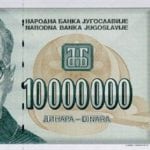 Weird Stuff
Weird Stuff  Weird Stuff
Weird Stuff  Our World
Our World 10 Ways Your Christmas Tree Is More Lit Than You Think
 Movies and TV
Movies and TV The 10 Coolest Stars to Set Sail on The Love Boat
 History
History 10 Things You Didn’t Know About the American National Anthem
 Technology
Technology Top 10 Everyday Tech Buzzwords That Hide a Darker Past
 Humans
Humans 10 Everyday Human Behaviors That Are Actually Survival Instincts
 Animals
Animals 10 Animals That Humiliated and Harmed Historical Leaders
 History
History 10 Most Influential Protests in Modern History
 Creepy
Creepy 10 More Representations of Death from Myth, Legend, and Folktale
 Technology
Technology 10 Scientific Breakthroughs of 2025 That’ll Change Everything
 Weird Stuff
Weird Stuff Ten Bizarre Facts About The Doge Meme
 Our World
Our World 10 Ways Your Christmas Tree Is More Lit Than You Think
 Movies and TV
Movies and TV The 10 Coolest Stars to Set Sail on The Love Boat
Who's Behind Listverse?

Jamie Frater
Head Editor
Jamie founded Listverse due to an insatiable desire to share fascinating, obscure, and bizarre facts. He has been a guest speaker on numerous national radio and television stations and is a five time published author.
More About Us History
History 10 Things You Didn’t Know About the American National Anthem
 Technology
Technology Top 10 Everyday Tech Buzzwords That Hide a Darker Past
 Humans
Humans 10 Everyday Human Behaviors That Are Actually Survival Instincts
 Animals
Animals 10 Animals That Humiliated and Harmed Historical Leaders
 History
History 10 Most Influential Protests in Modern History
 Creepy
Creepy 10 More Representations of Death from Myth, Legend, and Folktale
 Technology
Technology 10 Scientific Breakthroughs of 2025 That’ll Change Everything
10 Of The Worst Snitches Of All Time
You may have heard that “loose lips sink ships,” but sometimes loose lips do a lot worse. Some snitches have betrayed noble causes. Others have committed heinous crimes and gotten away with it. Some have spewed hatred, others have lied, and others still may have eavesdropped on your phone calls.
10 Wikileaks Snitch
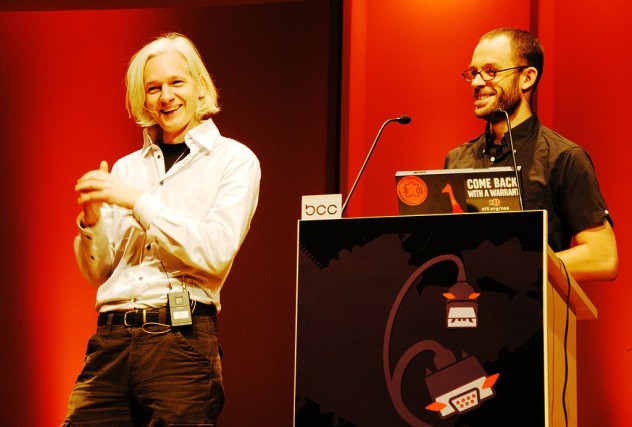
Wikileaks is in the business of exposing the secrets of the world’s governments and corporations, so it should come as no surprise that those same institutions hatched a plan to steal Wikileaks’ secrets. Their snitch was an 18-year-old from Iceland named Siggi.
Sigurdur “Siggi” Thorsdarson began volunteering for Wikileaks in February 2010 when he was just 17. At first, Siggi was driven by a passion for the politics of Wikileaks and its founder Julian Assange. He pored over raw documents for Wikileaks. When several staff members abruptly left Wikileaks in September 2010, Assange gave Siggi a bigger role in the organization—controlling the Wikileaks chatroom. This new role was more significant than it may appear, as Siggi was tasked with being the first point of contact for journalists and others trying to reach the organization.
Soon, Siggi decided to launch a mission of his own. He approached LulzSec hackers to hack the computer systems of Icelandic government officials and turn over their information to Wikileaks. To authenticate his position in Wikileaks, Siggi sent a secretly filmed video of Assange to the hackers.
That same hacking group had been infiltrated by the FBI a week earlier, and its leader, “Sabu,” had become an FBI mole. The FBI got wind of Siggi’s plan and warned the Icelandic government of an imminent attack. Siggi grew skittish and approached the United States embassy in Iceland seeking to turn over a trove of information from Wikileaks. Siggi was then invited to a meeting in the embassy where he gave government authorities a copy of Julian Assange’s passport as well as copies of private correspondences.
FBI agents then tried to have Siggi secretly tape Assange and catch him saying “something incriminating about LulzSec” hackers. The tape was supposed to be used as evidence to destroy Assange and Wikileaks. Siggi declined the secret mission but kept the door open with the FBI.
Siggi changed his tune after he was fired from Wikileaks in November 2011. He’d been caught operating an online T-shirt store where he sold Wikileaks merchandise for his own gain—a purported $50,000. Miffed, Siggi then took an offer to fly to the United States for a marathon meeting with the FBI. He provided the FBI with chat logs of Wikileaks’ correspondences along with photos and videos of Wikileaks operations shot in its office in England. In return for selling out the organization he once loved, Siggi was paid a measly $5,000 by the FBI.
9 The FBI’s Ku Klux Klan Snitch
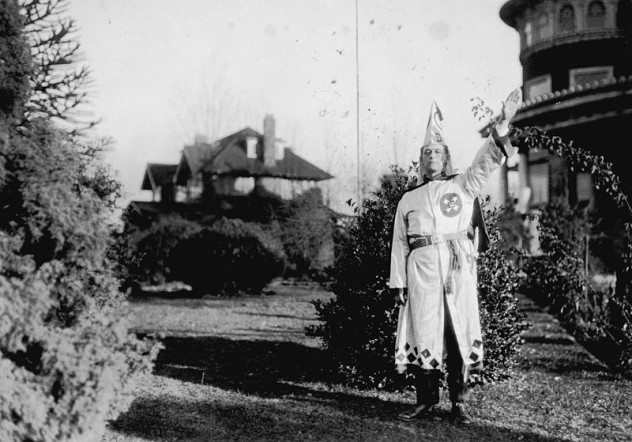
Two weeks after the “Bloody Sunday” civil rights protests of 1965 in Selma, Alabama, white civil rights activist Viola Liuzzo was driving black civil rights protesters home from another march. Little did she know that even this seemingly innocuous car ride would result in more bloodshed.
She stopped for gas and was targeted with racially fueled harassment by rural Alabama locals. Liuzzo and company quickly left the gas station to avoid incident. She was soon thereafter followed down a back road by a car filled with four members of the Ku Klux Klan. The Klansmen sped up to her car and opened fire on Liuzzo and Leroy Moton, a 19-year-old African American in the car with her. Liuzzo was shot twice in the head; she died instantly and the car veered into a ditch and crashed into a fence. Moton, covered in Liuzzo’s blood, lay motionless when a Klansman walked up to the crash to check the victims for signs of life.
The KKK member surveyed the wreckage and walked away because both victims appeared to be dead. When the KKK members drove off, Moton crawled out from the wreckage and was rescued by a passing motorist.
The nightmare didn’t end with Liuzzo’s death; one of the Ku Klux Klan members in the party that shot and killed her happened to be an FBI informant named Gary Rowe. When they caught wind of the murder, the FBI was worried they might be held accountable for their informant’s role in the murder, so they tried cover up the crime. Gary Rowe called the FBI to notify them that he and the Ku Klux Klan members had planned and carried out the murder of Viola Liuzzo.
FBI director J. Edgar Hoover began a campaign to smear Liuzzo’s name in the public. In response to the incident, the FBI planted fake stories in newspapers around the country that claimed Liuzzo was a drug addict and that her husband was a member of the Mafia. They also started rumors that claimed she had an interracial affair with 19-year-old Moton and that she had abandoned her children to be with him.
The FBI’s cover-up and smear campaign weren’t discovered until over a decade later in 1978, when Liuzzo’s children filed a request under the Freedom of Information Act to obtain the FBI’s documentation of the incident. Rowe testified against one of the gunmen and was not initially charged for his role in the murder. He was indicted after Liuzzo’s family used their newly obtained documents to file a lawsuit. The trial resulted in a hung jury, and neither Rowe nor the FBI was penalized for their part in the murder.
8 Communist Party Snitches
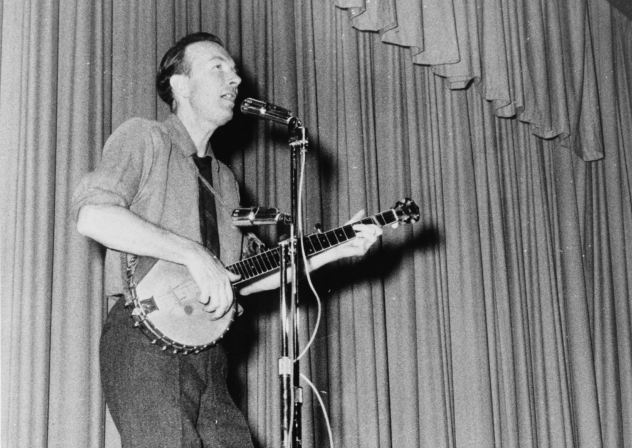
The FBI once had an obsession with communism in the United States. So strong was this obsession that they considered the Frank Capra classic film It’s a Wonderful Life to be communist propaganda that was an “obvious attempt to discredit bankers,” and thought Marilyn Monroe had “drifted into Communist orbit.” In the early 1960s, 1,500 out of the 8,500 members of the American Communist Party were actually FBI informants.
Of all of these snitches, perhaps the most infamous was a man named Harvey Matusow. Matusow began his career with the party working as a clerk in the American Communist Party bookstore in New York City. He soon grew dissatisfied with his low-level rank in the party and approached the FBI. He became a paid informant in 1950.
Matusow filed detailed reports to the FBI on the inner workings of the Communist Party and named several of its members. Soon, though, the party caught wind of his betrayal and expelled him. As a result, the FBI kicked him to the curb also as they could see no need to keep him as a paid informant when he no longer had access to the information they wanted. That’s when Matusow went ballistic.
Matusow offered to testify before the House Un-American Activities Committee and Joseph McCarthy’s own subcommittee in its upcoming anti-communist show trials as a paid expert witness. In his ensuing testimonies, Matusow claimed that everyone—from CBS News to the United Nations to the Girl Scouts—were in league with the communists. He claimed that 500 teachers from New York City public schools were members of the Communist Party. He claimed that the New York Times had 126 communists within its Sunday section staff (at a time when the Times employed no more than 100 people on the section). As a result of his testimonies, Matusow soon became an aide to Joseph McCarthy himself.
Folk singer Pete Seeger was accused of communism by Matusow. As a result, Seeger was subpoenaed before Congress, who demanded he divulge his personal and political associations. Seeger refused on the grounds that Congress’s order would violate his First Amendment rights, stating, “I am not going to answer any questions as to my association, my philosophical or religious beliefs or my political beliefs, or how I voted in any election, or any of these private affairs. I think these are very improper questions for any American to be asked, especially under such compulsion as this.”
After a March 1961 trial, Seeger was convicted of contempt of Congress and sentenced to one year in prison. He avoided a jail term after a court of appeals overturned the conviction in May 1962, but his career was nonetheless ruined in the resulting blacklist.
The worst part of it all is that Matusow later admitted to making it all up in a 1955 memoir titled False Witness. He recanted his testimonies that ruined the lives of countless people including Pete Seeger. He admitted to lying in “almost every instance” he testified.
As a result of Matusow’s confessions, he was tried and convicted of perjury. He was sentenced to five years in prison, though he only ended up serving 44 months before his release.
7 The Anonymous Snitch
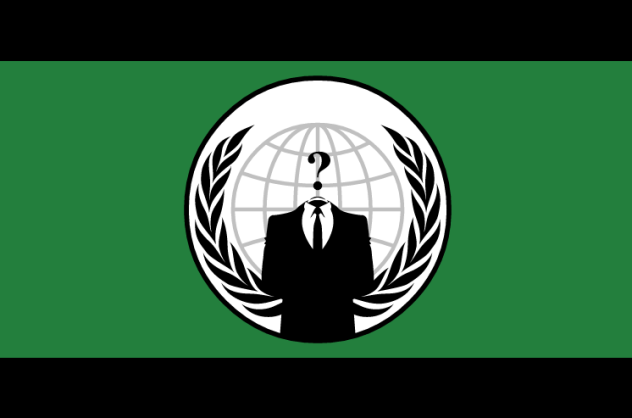
The hacking/activist group known as Anonymous has done some amazing but illegal things since its conception in 2003. Anonymous has hacked the Church of Scientology, Visa, and the Westboro Baptist Church, to name a few. The Anonymous offshoot LulzSec even pulled off the astounding feat of hacking PBS’s website in 2011 and posting a fake story on it that claimed that Tupac and Biggie Smalls were still alive and living in New Zealand. So, it should come as no surprise that someone powerful tried to take them both down. However, what should come as a surprise is that it was one of their own members who tried to do so: the hacker Sabu, who co-founded LulzSec and was known as “the de facto King of Anonymous.”
In his role atop the hacking hierarchy, Sabu led an array of fabled cyber attacks on some of the world’s most powerful governments and corporations, including Sony and the CIA. It wasn’t long until Sabu was arrested for his hacking; in June 2011, federal authorities busted down his door.
His real name has since been revealed to be Hector Xavier Monsegur. Monsegur pled guilty to 12 criminal charges and faced up to 124 years behind bars. The day he was arrested, Monsegur purportedly agreed to become an undercover agent for the FBI and snitch on his former associates. Monsegur gave the FBI the inside scoop on LulzSec and Anonymous. He divulged information which led to the arrest of five hackers associated with the groups.
As an FBI informant, Monsegur took part in the epic hack on private intelligence firm Stratfor, seeking to prosecute the hackers he lured into the mission. After Anonymous-affiliated hackers got into Stratfor’s computer systems, they leaked the company’s emails to Wikileaks. The leak of 5.5 million emails showed a litany of wrongdoings on the part of Strafor, including how the company had been hired by corporations like Coca-Cola and Dow Chemical to spy on anti-corporate activists. The leak also showed that Stratfor plotted with Goldman Sachs to use the intelligence it gathered for insider trading on multiple stock markets around the world.
One of the most prominent hackers involved in the Stratfor leak, Jeremy Hammond, was apprehended by federal authorities with the help of Monsegur. Hammond was sentenced to 10 years in prison for exposing Stratfor’s misdeeds to the public.
Monsegur spent three years as an FBI informant. In return, he served only seven months in prison, a far cry from the 124 years he was originally sentenced to.
6 AT&T

One of the most prolific snitches in history is not an individual, but instead a corporation. In fact, there’s a good chance it’s your phone company.
Since 2007, AT&T has been snitching on its customers on behalf of the DEA. As a part of the DEA’s Hemisphere Project, AT&T unhanded 26 years’ worth of its customers’ phone records, including both the content of the calls and the locations of the callers. In return, the United States government pays AT&T for access to the call records. AT&T has been reportedly instructed to “never refer to Hemisphere in any official document.”
All of this occurs without the knowledge or consent of AT&T’s customers. The program even affects callers who are not directly AT&T’s customers, but who made calls to AT&T customers.
The Hemisphere surveillance program is said to dwarf even the size of the NSA’s infamous computer surveillance program. Around four billion call records are added to the DEA’s database every day.
5 The FBI’s Neo-Nazi Radio Host Snitch
Hal Turner was the host of a radio program popular among Neo-Nazis called The Hal Turner Show. He wrote a blog in which he espoused some of the most vicious Neo-nazi rhetoric imaginable. But according to Turner, he didn’t believe a word of the hatred he spewed. Instead, he claims that the FBI made him do it. It turns out that Turner was another paid FBI informant.
Turner’s radio program attracted the attention of white supremacists around the country with its adamant holocaust denial and its assertions that a black congresswoman should be lynched. As Turner’s popularity grew within the ranks of right-wing extremists, he attracted the attention of the FBI. Turner has said that the FBI told him to “ratchet up the rhetoric.” Working as an informant, Turner supplied the FBI with information about extreme right-wing groups that tuned into his show.
Turner became so prolific in far-right politics that he tried to run for Congress, seeking the Republican Party nomination in New Jersey’s 13th district in 2000. Turner got 18.6 percent of the vote in the primary, but lost to another candidate.
Turner’s rhetoric got exceedingly heated when he was arrested after lobbying threats of violence against public figures, including a Massachusetts school superintendent. He called for parents to use “force and violence” against the superintendent, who introduced a new curriculum supporting gays and lesbians. Turner called it an “indoctrination into deadly, disease-ridden sodomite lifestyles.”
When he stood trial, Turner claimed that he never believed any of the far-right and racist views he publicly touted. Turner’s lawyer said, “I don’t think he was a racist. He was doing a lot of those things at the behest of the FBI.” The lawyer claimed that Turner was being trained by the FBI as “an agent provocateur” to deliberately incite his followers to commit wrongdoings.
Turner claims he was paid more than $100,000 by the FBI. He has also stated that he averted “more than 10 acts of domestic terrorism.”
4 COINTELPRO Snitches
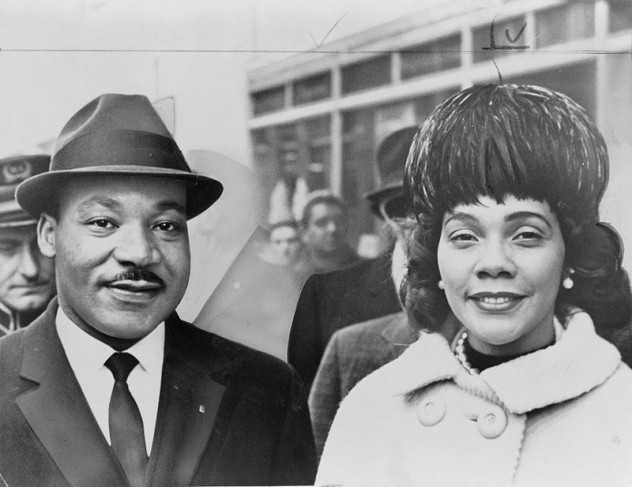
Beginning in 1956, the FBI launched the mother of all snitching operations known as COINTELPRO, an abbreviation of Counterintelligence Program. But this wasn’t the usual counterintelligence program. Instead of spying on foreign governments, this program targeted American citizens. With COINTELPRO, the FBI attempted to disrupt and splinter the American left, targeting any and every group advocating progressive change. Part of the FBI’s stated mission for COINTELPRO was “maintaining the existing social and political order.”
Snitches with COINTELPRO surveilled, infiltrated, and exposed the secrets of a variety of progressive groups including protesters of the Vietnam War, civil rights organizations, a Native American advocacy group, the Black Panthers, and activist groups in the women’s rights movement.
Perhaps the best known COINTELPRO target was civil rights icon Dr. Martin Luther King Jr. Accordingly, the FBI secured a snitch with access to King who also happened to be one of the most prominent photographers documenting the civil rights movement. Ernest Withers was a trusted confidant of Martin Luther King Jr. He photographed some of the most important moments in King’s life.
All the while, though, he was receiving paychecks from the FBI for the photographs he sent them, which were used to anticipate his every move, disrupt his protests, and even blackmail him. Withers also provided the FBI with information about other activists, pastors, and candidates running for public office. He told the FBI of planned civil rights demonstrations so the FBI could try to disrupt the protests.
The FBI used some of this information to break into one of King’s hotel rooms and recorded evidence of an extramarital affair. Afterward, they sent a letter to King directly, claiming they would blackmail him and implying they would leak the information if he didn’t commit suicide in the next 34 days. The FBI told King, “You are done. There is but one way out for you. You better take it before your filthy, abnormal fraudulent self is bared to the nation.”
Another FBI snitch with the COINTELPRO program was in the Black Panther Party and supplied the FBI with a floor plan of the building where Black Panther leader Fred Hampton was staying. The floor plan was used in an FBI raid in which Hampton was assassinated by the FBI and Chicago Police Department.
COINTELPRO only came to light when a group of activists broke into the FBI’s offices in 1971 and stole documents detailing the program. Soon after, the program was terminated by FBI director J. Edgar Hoover.
3 The FBI’s 9/11 Hijackers Informant

After the terrorist attacks of September 11, 2001, the world was looking for answers. Some pointed the finger to the Bush administration, who had been warned such an incident may occur a month earlier in a now infamous briefing. Regardless of whether or not the Bush administration is to blame for failing to prevent the attacks, the FBI bears some blame for the attacks. In fact, the terrorist attacks may not have happened at all had an FBI informant not helped the hijackers before they carried out the attacks on the World Trade Center.
Beginning in 2000, two of the 19 terrorists planning to hijack planes on September 11 of the next year rented a room from a man who was working for the FBI as an undercover informant. Months earlier, the same two renters had attended an Al-Qaeda summit in Malaysia.
Quickly, the FBI informant developed a close relationship with the terrorists living with him. He prayed with them. Then he helped them open up bank accounts in the United States for the first time. Those bank accounts would later be used to buy plane tickets for the flight which would end at the World Trade Center. Most jarringly of all, the same FBI snitch knew the hijackers living with him were using those bank accounts to take flight lessons.
After the attacks occurred, a Congressional inquiry and the 9/11 Commission wanted to investigate the incident and interview the informant who had befriended the hijackers, but the FBI refused to let that happen.
2 Iraq War Snitch

In 2003, Secretary General Colin Powell addressed the United Nations, and President Bush gave his State of the Union address urging the United States to support the invasion of Iraq. The “crown jewel” of this case for war was the testimony of an Iraqi snitch who was code-named “Curveball.” This testimony was later revealed as a complete and utter fabrication.
According to the Bush administration, Curveball was a chemical engineer working at an Iraqi plant making biological weapons for the Iraqi government. The Bush administration used this testimony to assert that Iraqi leader Saddam Hussein possessed and produced “weapons of mass destruction” and was therefore a threat to the United States. Needless to say, their ploy was successful. The United States invaded Iraq just three months after President Bush’s State of the Union Address.
Soon, the story began to crumble. It was soon discovered that the plant where Curveball said he worked wasn’t manufacturing weapons of mass destruction but was instead devoted to the production of baby formula.
Curveball didn’t even work at a factory of any kind in Iraq. Instead, he had worked at a television production company in Baghdad but had a warrant issued for his arrest for stealing from his workplace before he fled to Germany. From there, Curveball began to fabricate his identity for German and American intelligence agencies so that he could receive asylum.
In 2011, The Guardian published in an interview with Curveball in which he admitted for the first time that he fabricated his entire testimony and that the “crown jewel” of the Bush Administration case for the Iraq War was a total lie.
1 Manhattan Project Snitch
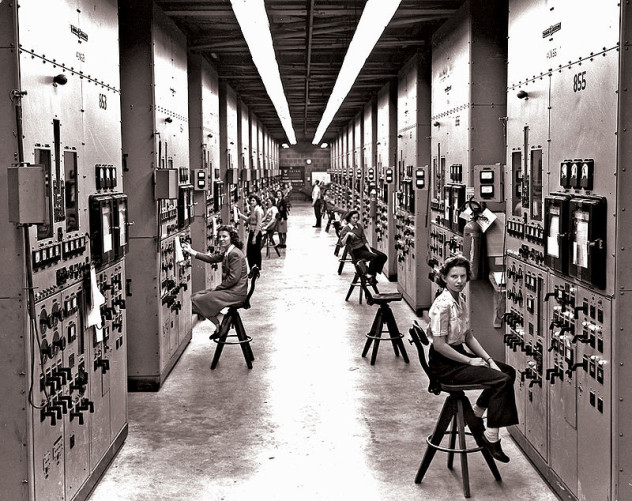
While the Cold War kept the entire world’s population on the brink of nuclear annihilation, it turns out that it only occurred because of one man. It wasn’t Joseph Stalin, nor Harry Truman, nor any other head of state for that matter. Instead, the entirety of the Cold War rests on the shoulders of one Iowa native named George Koval, one of the most prolific snitches in human history.
It all began with the Manhattan Project. From 1942 to 1946, the United States government—along with the United Kingdom and Canada—implored some of the brightest minds in the world to create the first nuclear weapon in human history as a part of the Manhattan Project. Participants included Nobel Prize–winning physicist Richard Feynman and a lesser-known man by the name of George Koval who would later be revealed as a Soviet spy.
As a health physics officer on the Manhattan Project, Koval monitored radiation given off during the experiments and was granted top-secret security clearance. It wasn’t long before he began to transmit the project’s nuclear secrets to Soviet intelligence agencies in Moscow through encrypted messages.
By giving the Soviet Union nuclear secrets, Koval single-handedly sparked the Cold War. At the time, the United States government believed the Soviet Union would not develop nuclear weapons until the early to mid-1950s. Instead, the Soviet Union successfully detonated their first nuclear bomb in 1949. Soon after the detonation, the Soviet Union and United States were locked in a terrifying race.
Koval’s snitching was believed to be first discovered by American intelligence agencies in the early 1950s, but it only came to light to the general public in 2002.
Koval had quite an unlikely background for a Soviet spy. He was born in Sioux City, Iowa, served in the army, and was fond of baseball. Koval’s affinity for communism began during the Great Depression when his family worked on a collective farm. He later immigrated to the Soviet Union with his family, where he graduated from the Mendeleev Institute of Chemical Technology, then was trained by the Soviet Foreign Intelligence Service to become a spy.
Koval then returned to the United States, where he attended the City College of New York. His classmates described him as a “ladies man.” He was drafted into the army during World War II and was ultimately chosen to be a part of the Manhattan Project.
Shortly after his death in 2007, Russian President Vladimir Putin awarded Koval the Hero of the Russian Federation Award for his “courage and heroism while carrying out special missions.”
Nathan is a freelance journalist and screenwriter.








